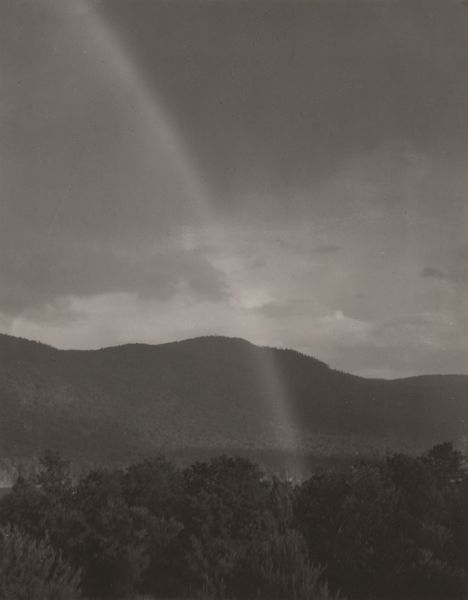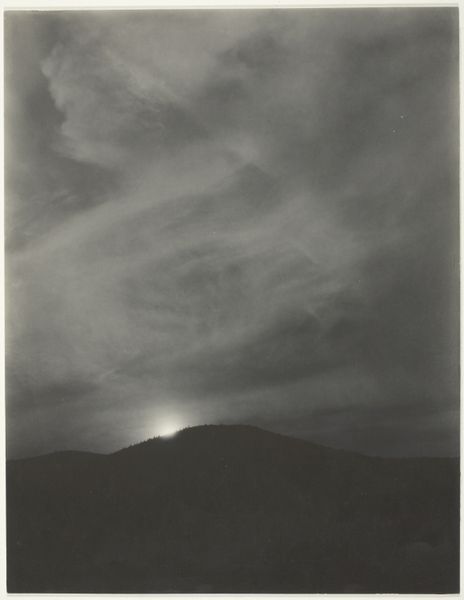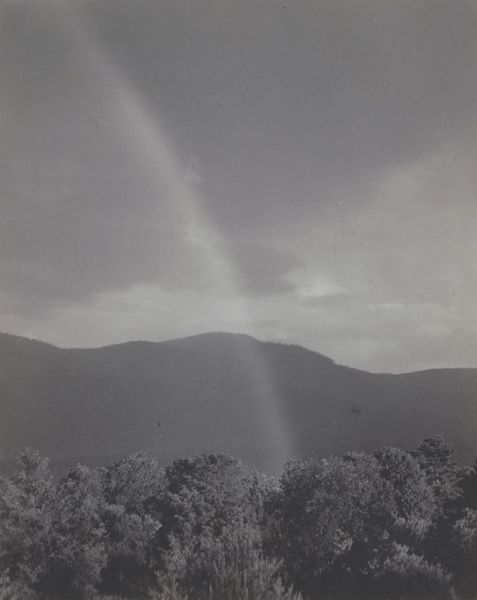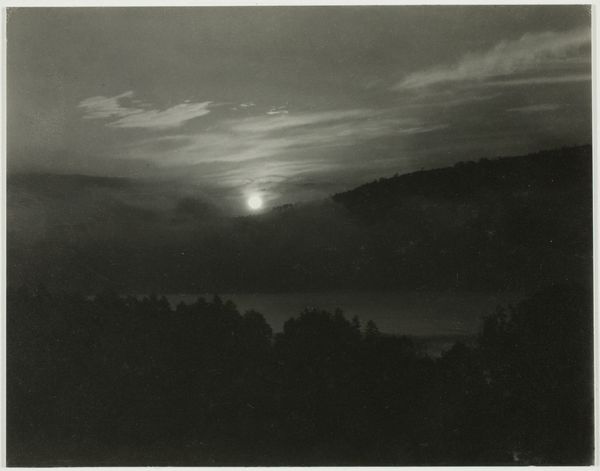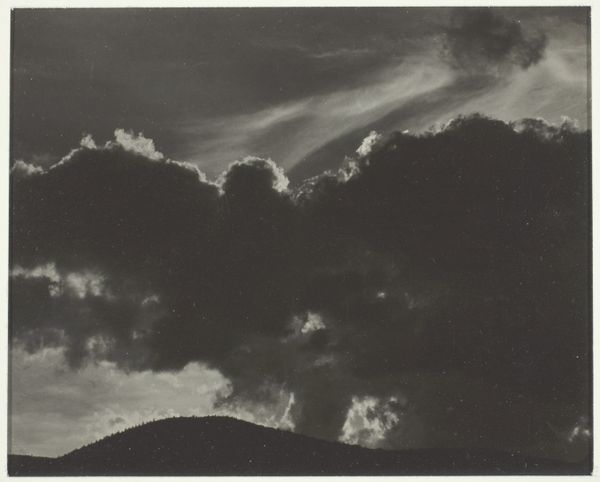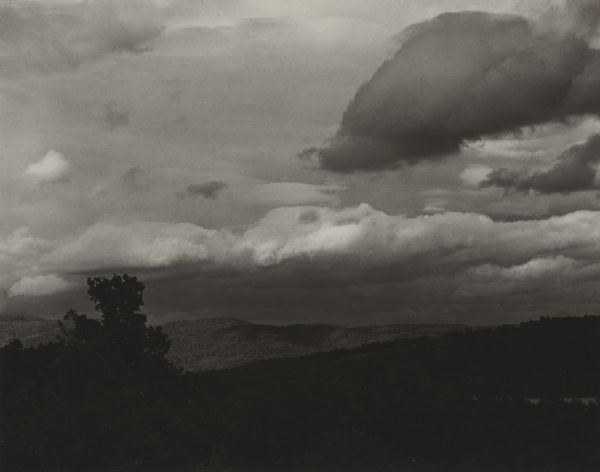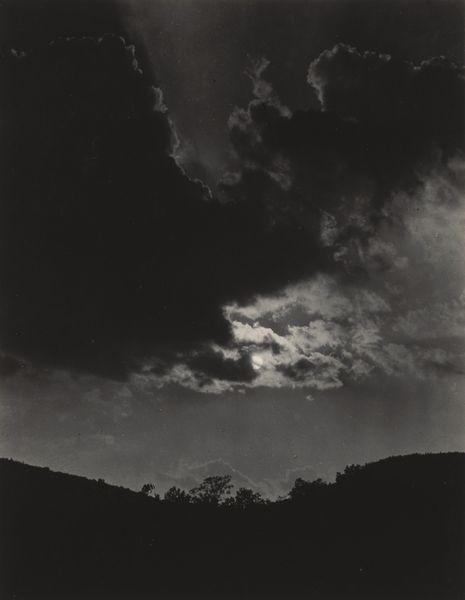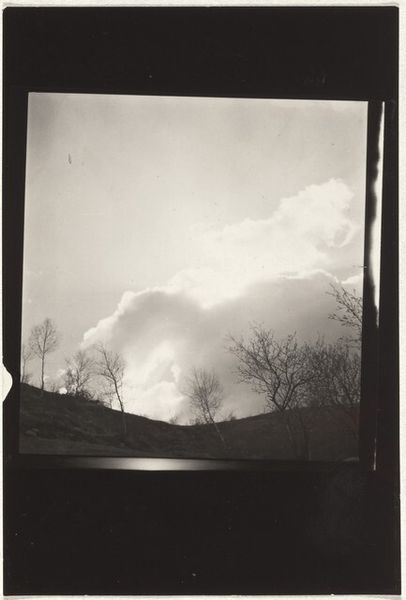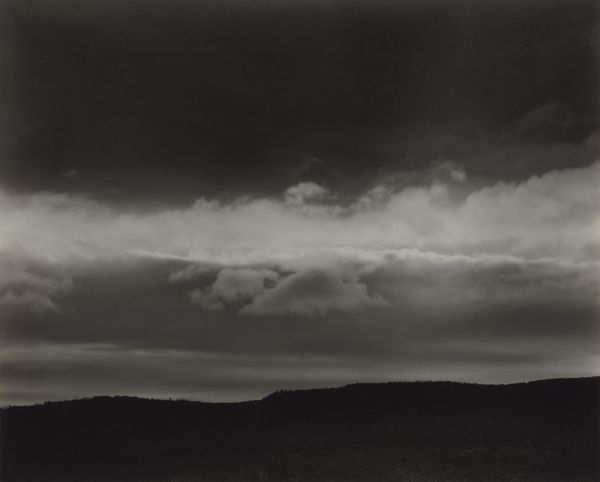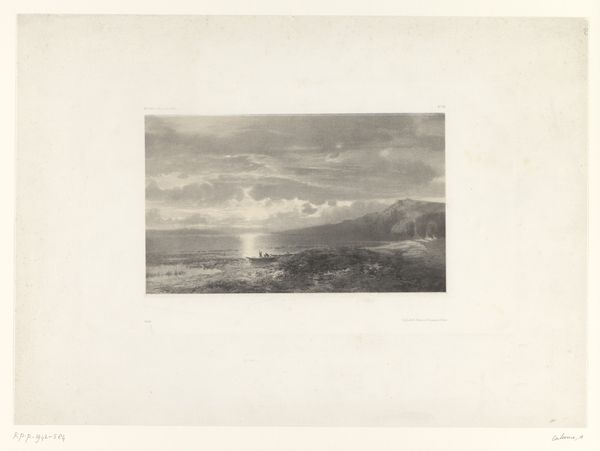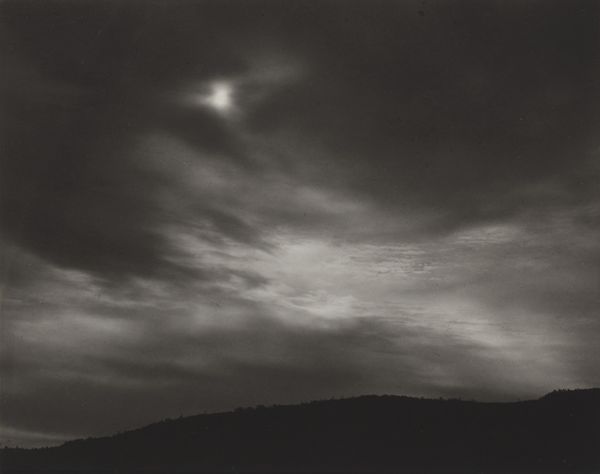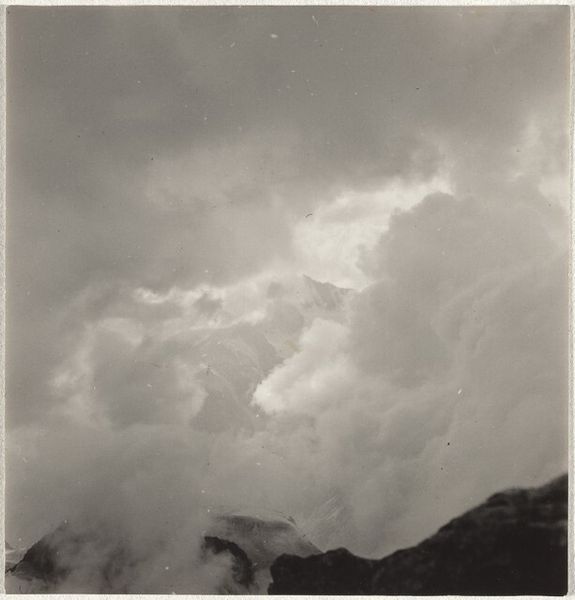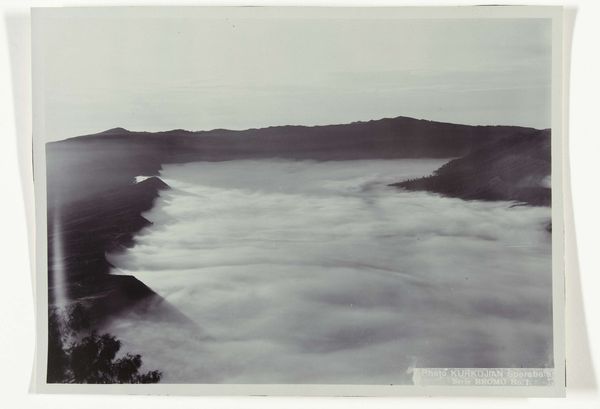
Dimensions: 11.6 × 9.1 cm (image/paper/first mount); 34.2 × 27.7 cm (second mount)
Copyright: Public Domain
Editor: So, here we have Alfred Stieglitz's "Rainbow" from 1920, a gelatin silver print currently at the Art Institute of Chicago. What strikes me is the drama of it all—a beam of light cutting through what looks like an otherwise ordinary landscape. What do you make of it? Curator: This seemingly simple photograph speaks volumes about the social and cultural landscape of the early 20th century. Stieglitz, already a champion of photography as fine art, deliberately presents this image in a style reminiscent of Impressionist painting, which itself was fighting for institutional recognition decades earlier. Editor: Interesting! So the style relates to cultural perceptions? Curator: Precisely. By employing soft focus and a limited tonal range, he's blurring the lines between photography and painting, asserting photography's place within the established art world. The rainbow itself, absent the full spectrum, becomes a symbol open to interpretation – perhaps hope in the aftermath of World War I? Or even an indictment of the false promises inherent within modernism. What do you think a contemporary audience might have thought? Editor: I can see that. And by using such an elusive subject matter, could it represent more than meets the eye? Curator: Absolutely! This wasn’t just a picture of a rainbow; it was a statement. He wanted photography considered alongside painting and sculpture in museums, galleries, and private collections. And the content becomes part of the politics. Does the artist use their access to these institutions to engage with current politics and culture? Does he use these tools to influence audiences? These are important questions when trying to interpret the art and the artist in his socio-historic context. Editor: I've never thought about landscape photography in this context before. I always focused on composition but this is way more thought provoking! Curator: And this photograph proves why that is worth revisiting!
Comments
No comments
Be the first to comment and join the conversation on the ultimate creative platform.
